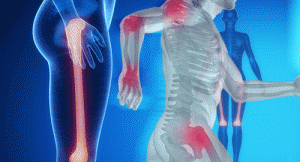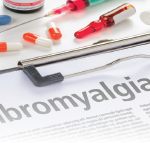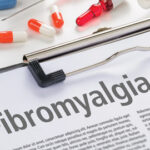 Intensive physical therapy (PT), occupational therapy (OT) and psychotherapy can be combined to successfully treat children with fibromyalgia. The treatment can take place without the use of medications and yet still result in significantly reduced pain and improved function. The program, implemented by The Children’s Hospital of Philadelphia (CHOP), is organized around the philosophy that children can heal themselves with tools they learn from therapists.1
Intensive physical therapy (PT), occupational therapy (OT) and psychotherapy can be combined to successfully treat children with fibromyalgia. The treatment can take place without the use of medications and yet still result in significantly reduced pain and improved function. The program, implemented by The Children’s Hospital of Philadelphia (CHOP), is organized around the philosophy that children can heal themselves with tools they learn from therapists.1
David D. Sherry, MD, section chief of the Division of Rheumatology at CHOP, and colleagues describe their therapy approach in The Journal of Pediatrics in an article published on July 21, 2015. Their study included 64 children with a mean age of 16 years. More than 90% of the children were girls who had a mean duration of symptoms of 21 months. The investigators noted that the study was neither randomized nor controlled. Moreover, the therapy program was individualized to each patient, thus, lasting different lengths of time for each patient. In general, the children received five to six hours of intensive PT/OT daily and at least four hours of psychosocial services per week. The mean duration of the program was 23 days, ±13 days. All children were off pain medicine during the therapy program and for their one-year follow-up.
The mean pain score decreased significantly from program entry to program completion (p=0.001). Moreover, at the one-year follow-up appointment, 33% of patients reported no pain. The Bruininks-Oseretsky Test of Motor Performance, Second Edition (BOT-2), revealed that all measures of function improved significantly by the end of the program and either stayed at that level or continued to improve over the course of a year. When the children were given the Bruce treadmill protocol test, their time increased from 588 seconds to 801 seconds (p<0.001) and then decreased to 750 seconds (p=0.005), which represented the 90th percentile for age and sex. The children also experienced significant improvements on the All Pain Stages of Change Questionnaire, Pediatric Quality of Life Inventory and Teen Report total score.
“Our children with long-standing fibromyalgia exhibited significant improvement in nearly all of the functional and pain measures that we applied. Function, as measured by the FDI [functional disability inventory], went from the moderately disabled category to normal and remained normal for the year after program completion. The BOT-2 battery continued to improve significantly over the one-year period,” wrote the authors.
The patients not only reported less pain one year after program completion, but they also were able to regain normal function and, in some cases, achieve remission. The authors propose that the intensity of the program was critical to its success.

